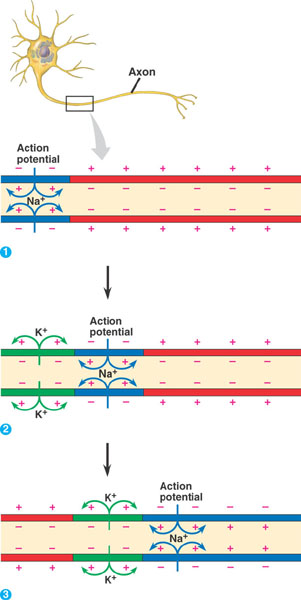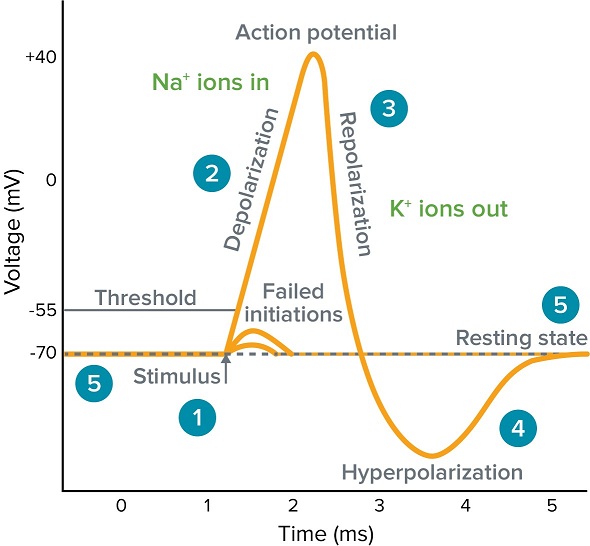Action Potential
links: reference: https://channelpedia.epfl.ch/wiki/ionchannels/188 6-13-2021
Action Potential #
An action potential occurs when a membrane potential rapidly rises and falls in a specific cell location; such as the traveling of Na+/K+ across an axon.
- GABA Interneurons in the cortex/hippocampus have much narrower spikes than say, glutamateric Pyramidal Neurons. Narrow-spiking neurons are often capable of firing at high frequencies with little decceleration over time. R
- The voltages differ. Pyramidal Neurons have ~-60 to ~-85 mV rest with a typical threshold of ~-53 mV, where it accelerates and reaches its max velocity near 0 mV.
Book Notes #


- Graded potentials are temporary reductions or increases in a membrane’s resting potential (which is regulated by ungated channels) known as depolarization and hyperpolarization respectively. With sufficient difference, reaching the threshold potential, an action potential is produced. These release a small electrical current that leaks out of the Neuron. They decay with time and distance.
- Stimulus (i.e ligand in ionotropic Neuroreceptors) allows some sodium influx. If threshold is reached, Na+ floods into the cell and action potential is triggered, since originally there was simply nothing present - only a repulsive force from the potassium found outside.
- Depolarization opens even more sodium influx, making the inside of the membrane positive relative to outside.
- Na+ inflow is blocked, and most potassium channels open, permitting K+ outflow as well.
- Action potentials are possible because K+ easily comes in and out of cells passively, while Na+ is forced in and out - so when brought in by a voltage-gated channel, there is hyperpolarization because K+ efflux cannot match it in time as it conducts through the axon.
- Sodium channels close, but some potassium channels remain open, leading to an undershoot in voltage.
- Potassium channels close and sodium channels become unblocked, and the membrane returns to resting potential.
- They’re an all-or-nothing kind of response. The magnitude and duration are the same at each position along the axon. (Is this implying that resting potential is always constant across any given single axon?)